8 Boo-tacular Swim Drills to Spice up the Season
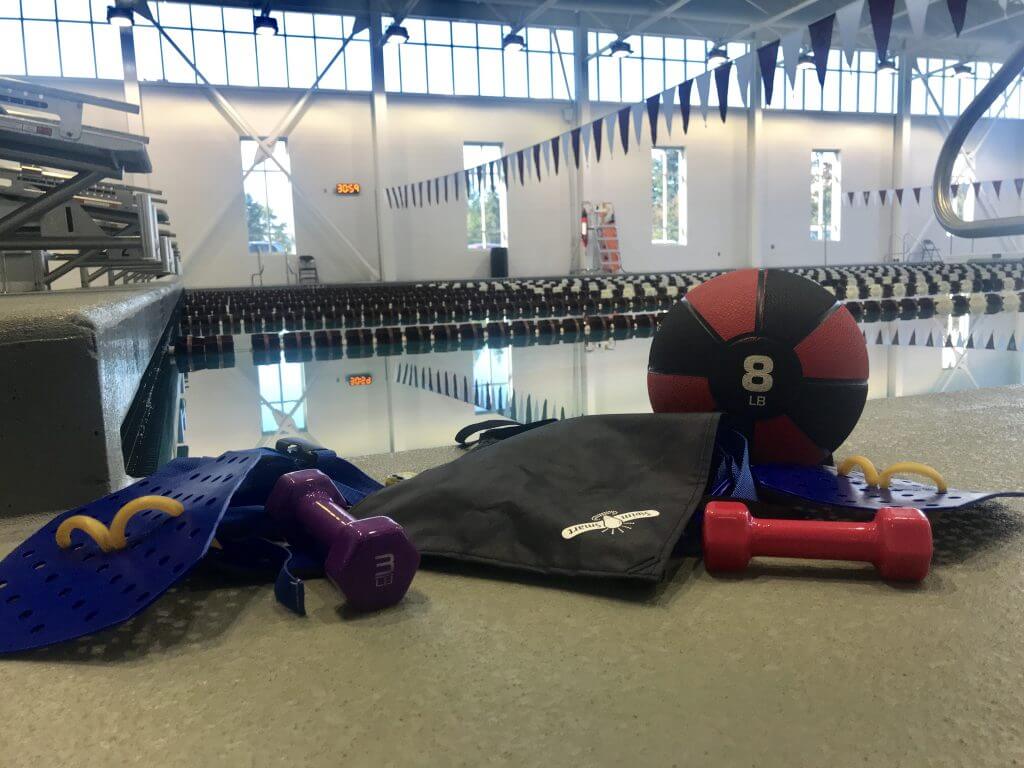
By McKenna Ehrmantraut, Swimming World College Intern.
It truly is Spooktober for many college, high school and club swimmers, as their coaches begin to draw brackets around their main sets. Coaches are pushing their swimmers to the edge as the competitive season heats up, and swimmers are running on pure heart and espresso. Intense training with double practices and weights during the beginning of the season are extremely beneficial for working out those last few off-season kinks; it’s time to start the time-drops before the big meets. Coaches are always looking for new and fun ways to keep swimmers motivated while working on technique, strength and endurance. Here are eight ideas to keep the “boo” out of Oct“boo”er practices.
Technique Work
1. Video Taping: This is a prime way to help fix that cross-over backstroke or see that you really aren’t keeping your elbow high on your freestyle pull. Coaches can video tape from above the water with something as simple as their phone. Most coaches have their athletes swim a 25, pull them out to show them the video, and then tape it again to see if they’ve improved. A variety of underwater cameras are on the market to use as well. If you want to maintain the yardage and get feedback at a practice, these are perfect. It’s best to see what swimmers look like during a real set versus fixing the stroke for just an easy 25, because this is most likely what their stroke will look like in a race.
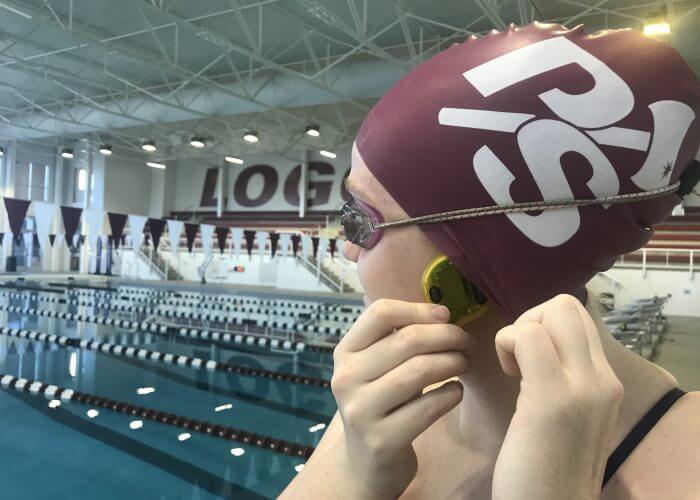
Photo Courtesy: McKenna Ehrmantraut
2. Tempo Trainers: This can be seen as a cruel torture device for sprinters and distance swimmers, but they are beneficial in helping to balance out stroke count and pace. Tempo Trainers are placed under the swim cap by the goggles and can be turned up or down depending on how fast you want their arms to go. The swimmer hears a small beep and enters the water with one arm (or both if it’s butterfly or breaststroke). Typically, the swimmer completes one stroke cycle per beep (one left arm and one right arm entry for freestyle and backstroke, or one pull for breast and fly). This is a perfect addition to a building, descending or pyramid set. Check out this reference guide to world class race tempos in each event to kick your training up a notch.
Strengthening Devices
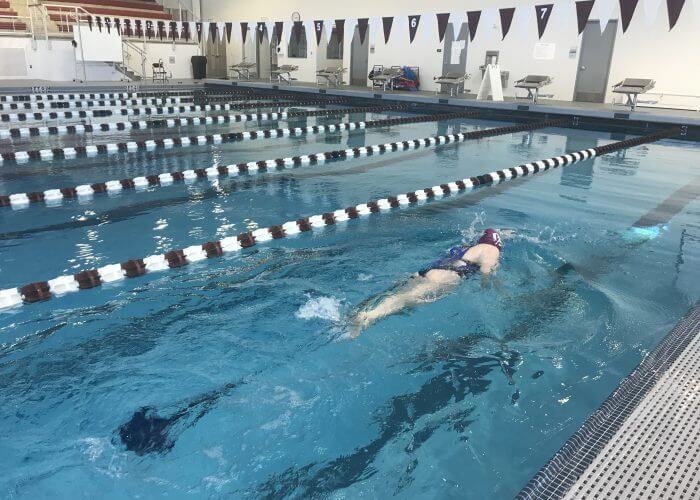
Photo Courtesy: McKenna Ehrmantraut
3. Parachutes/Buckets/Bands: Three great ways to see if a swimmer’s catch and pull are efficient and strong are by using parachutes, bucket/weight machines and stretchy bands. These activities are also perfect for sprinters trying to gain strength and speed in the water. Another fun thing to do with the bands is to try having swimmers swim back with someone pulling them. They’ll feel insanely fast and know what it should feel like during a sprint race.
Bringing Dryland to the Pool
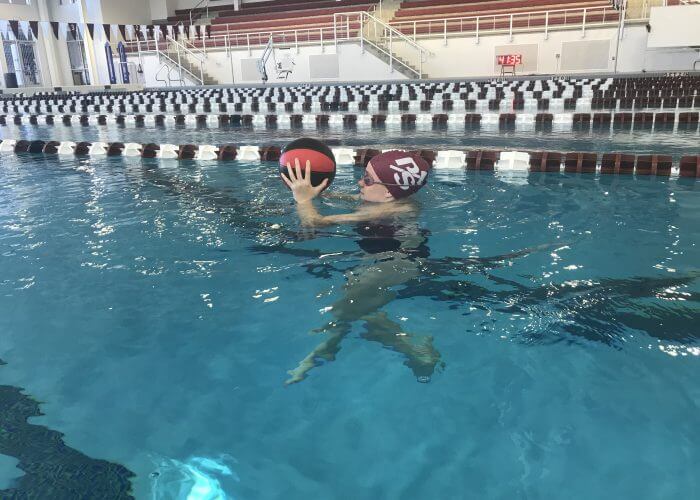
Photo Courtesy: McKenna Ehrmantraut
4. Weights and Med-Balls: We can all admit it – swimmers are not usually well known for their dryland abilities. So instead of risking yet another broken arm on stairs, have the swimmers hop into the water and use weights and med-balls. Med-balls take the classic water treading to the next level. Small weights (2-3 pounds are best) are perfect for drills. Swimmers can hold them above their head while kicking on their sides, use it to help raise their hips while kicking on their backs in streamline, or hold it behind their back while doing a reverse catchup drill.
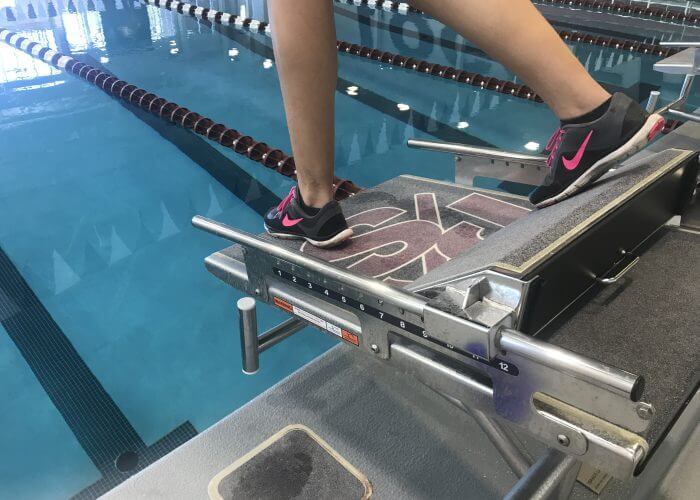
Photo Courtesy: Kassidy Cook
5. Tennis Balls and Shoes: Have any two-sport athletes? Give them a sense of the the land by having them hold tennis balls and wear their shoes! Putting a tennis ball underneath their chin helps (especially with younger or new swimmers) keeps their heads down in breaststroke. It may be an over-correction, but it will help them get the right feel for proper head position. Swimming with tennis shoes forces athletes get a better feel for the water and increase drag. It will feel as though their legs have fallen off, but it makes them think about their leg and hip position rather than their feet as they kick.
Switching it Up
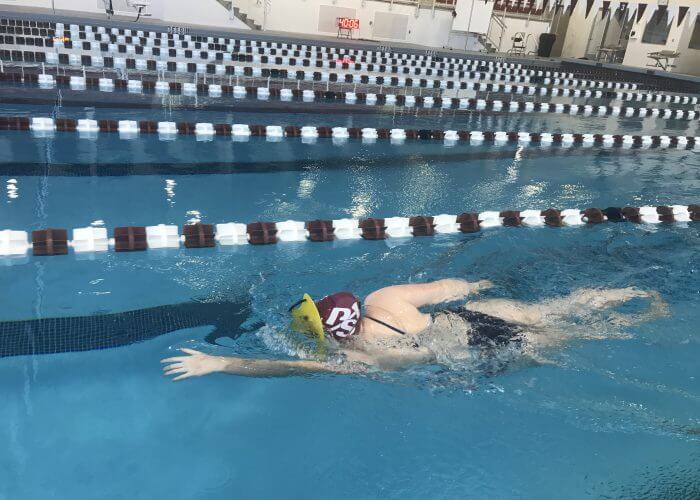
Photo Courtesy: McKenna Ehrmantraut
6. Putting a Paddle on Your Head: Putting a paddle on the top of your head is the swimmer’s version of a princess practicing posture by putting books on her head. It makes sure athletes are keeping their heads down during freestyle. Most swimmers don’t realize how far their head comes up when they breathe until they have a paddle smack them in the face many, many times during a simple 25. This drill is perfect for a 300-500 warm up swim.
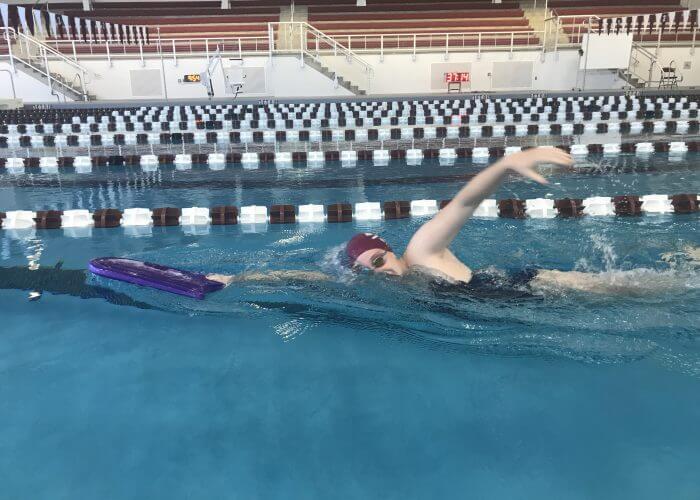
Photo Courtesy: McKenna Ehrmantraut
7. Catchup with a Kick-board: Catchup drill is a go-to for distance swimmers but can cause cross-over when the swimmers are asked to tap their hands together. If you have the swimmers hold onto a kick-board in front of their head, it will help keep their hands in the perfect parallel position.
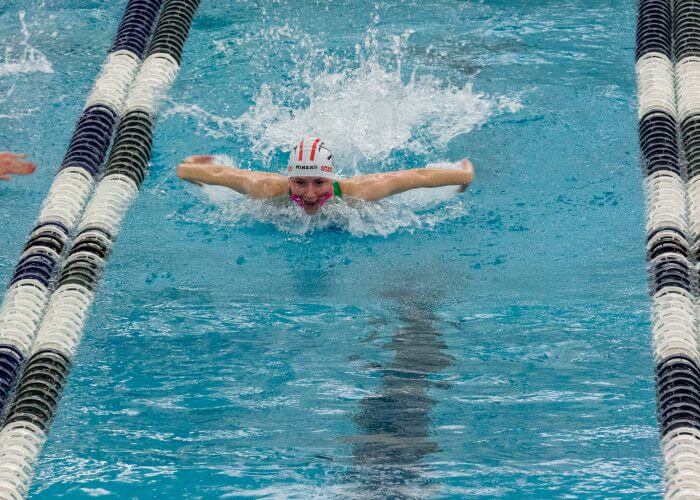
Photo Courtesy: Sarah Ehrmantraut
8. Whacky Goggles: Everyone has seen or experienced a cringe-worthy race where goggles fall around the swimmer’s neck, fill with water, or worst of all, in their mouth after they dive off the blocks. A helpful hack preparing for this in a race is practicing swimming with goggles off at practice. Have the team swim a few 25s with them completely off, with one side filled with water (or both sides), or with goggles in their mouth. This can help prevent the shock of having to adjust to chlorine in the eyes and find a good position to decrease drag from the goggles.
Hopefully these fun tips will help you have “fang-tastic” October swim sets!
All commentaries are the opinion of the author and do not necessarily reflect the views of Swimming World Magazine nor its staff.




Med ball practice. Always entertaining.
???